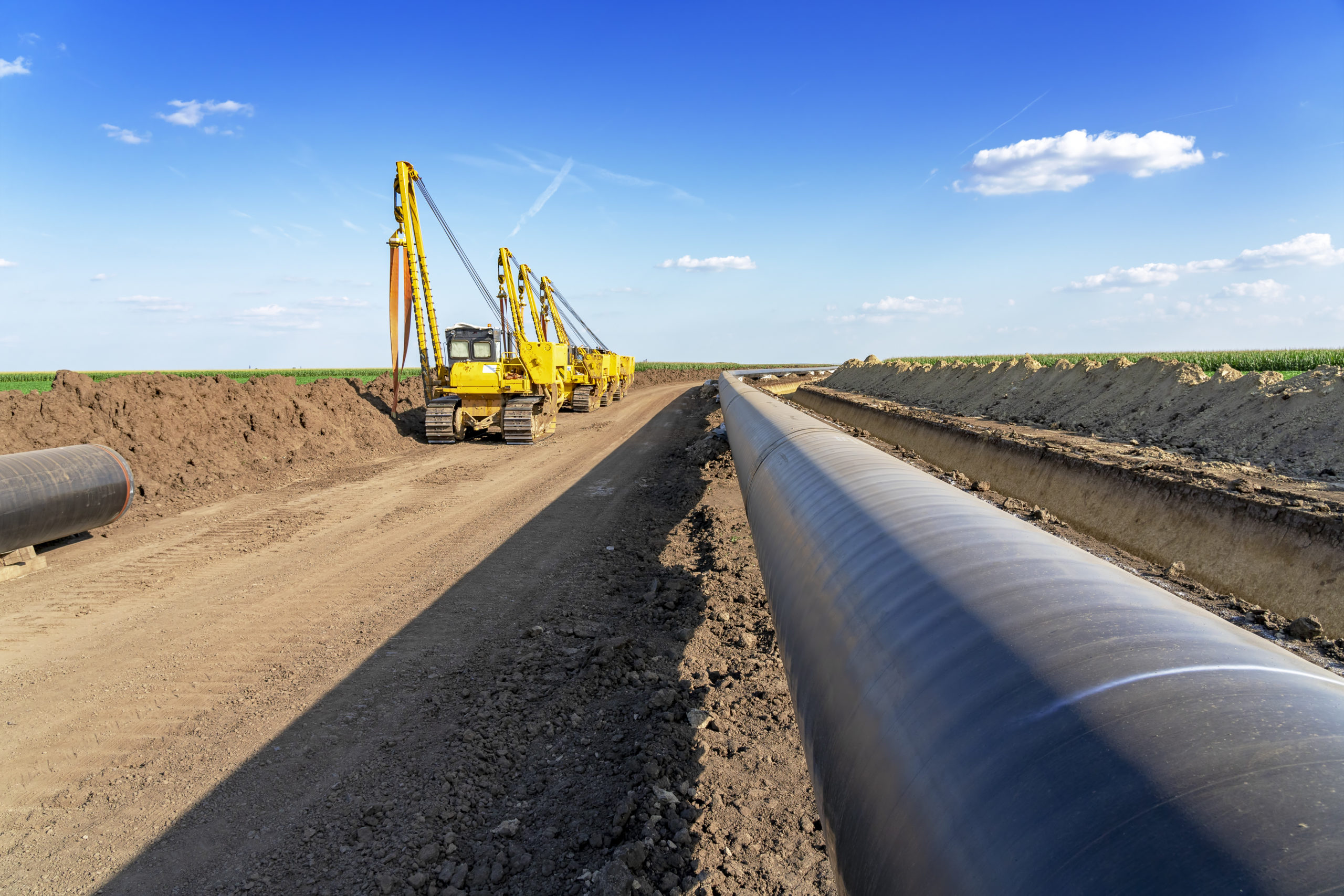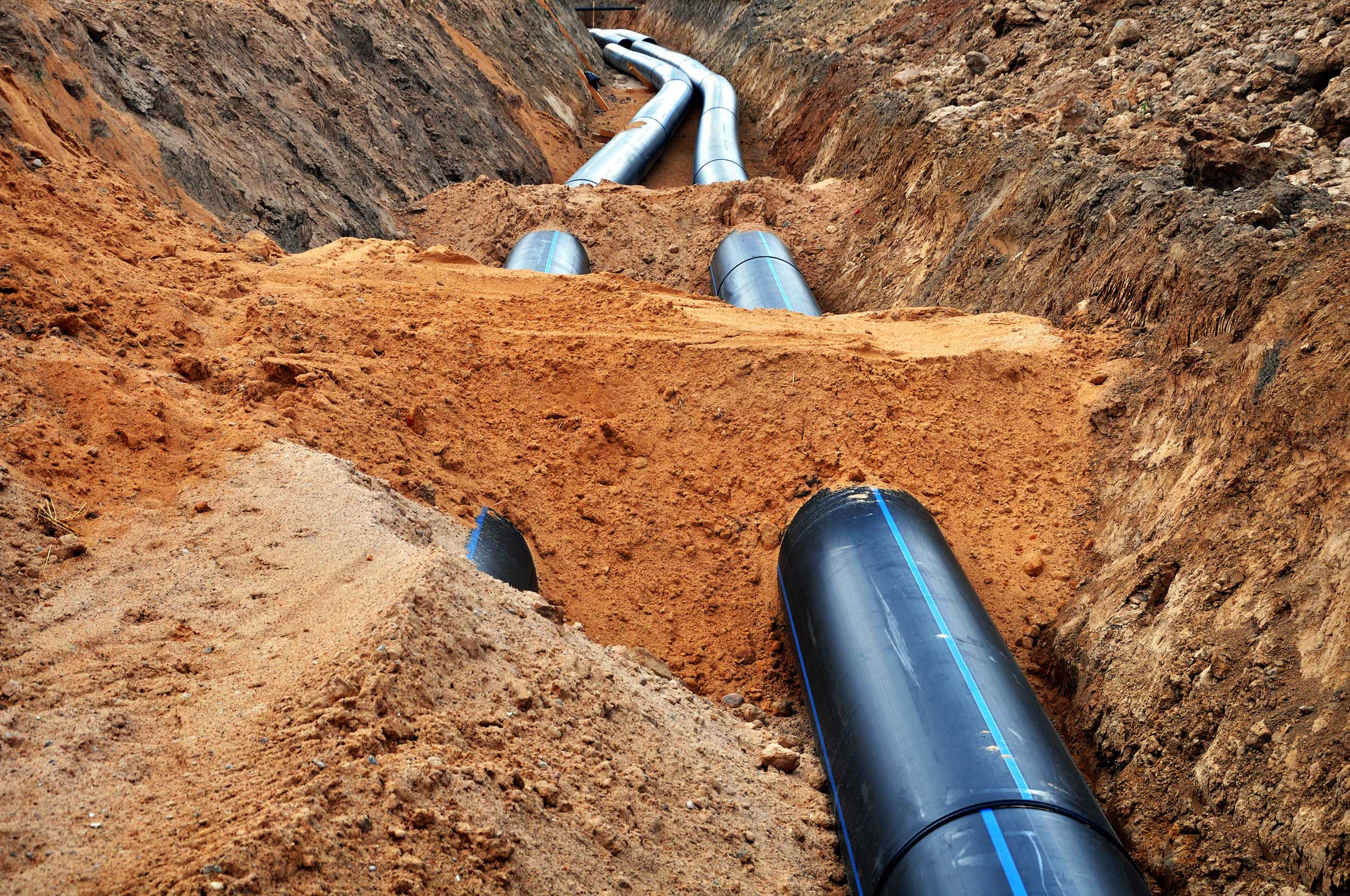A Deep Study Pipes Installation: Crucial Elements and Factors To Consider for Successful Projects
Effective pipe installation is a critical facet of engineering projects. It entails an array of aspects, from product selection to accurate sizing and style. Each choice can especially influence the system's performance and longevity. Recognizing these parts is necessary for avoiding pricey errors. Creek Pipe pipeline construction. As groups navigate via the intricacies of installation, several crucial factors to consider emerge that warrant focus. What are the critical components that can make or damage a piping project?
Comprehending Pipe Products and Their Applications
When selecting pipe materials, one have to think about the certain applications and environmental problems they will deal with. Various products offer unique buildings that satisfy various requirements. PVC is lightweight and resistant to rust, making it ideal for water distribution systems. On the other hand, steel pipelines provide stamina and longevity, suitable for high-pressure applications but may need safety coatings to stop rust.Copper pipelines are favored for plumbing as a result of their antimicrobial homes and simplicity of installation, while polyethylene is usually made use of in below ground applications because of its adaptability and resistance to cracking.The option of product also pivots on temperature level extremes, chemical exposure, and installation area. For high-temperature applications, products like CPVC or PEX can be beneficial. Ultimately, understanding the features and restrictions of each product help in making informed choices that enhance system performance and longevity.
Relevance of Proper Sizing and Design
Appropriate sizing and design of pipelines are critical for ensuring optimal flow prices and decreasing pressure loss. These factors additionally play a substantial duty in figuring out the compatibility of products used in the installation. An organized technique to sizing and design can substantially enhance the efficiency and long life of a piping system.
Effect On Circulation Rates
Circulation rates in piping systems are seriously influenced by the sizing and layout of the pipes. Properly sized pipes assure that the fluid can relocate efficiently, minimizing turbulence and maximizing circulation capacity. Extra-large pipes can bring about minimized circulation rates, while undersized pipelines might restrict circulation, resulting in boosted rubbing and prospective clogs. The layout needs to also think about factors such as pipe product, inner surface area smoothness, and design, as these add to the total efficiency of liquid transport. In addition, the arrangement of installations and links within the system can affect circulation prices. Consequently, precise interest to pipe sizing and style is important for enhancing circulation efficiency in any kind of piping installation project.
Stress Loss Factors To Consider

Just how can push loss significantly affect the efficiency of a piping system? Stress loss is a critical factor that can substantially lessen the efficiency of fluid transportation systems. When pipelines are improperly sized or designed, too much pressure loss may take place, causing reduced circulation prices and increased power usage. This inefficiency can cause higher operational expenses and prospective system failures. Proper sizing and layout are necessary to lessen pressure loss, guaranteeing that liquid dynamics remain suitable throughout the system. Engineers should meticulously think about factors such as pipe size, length, and product to achieve a reliable balance. Inevitably, attending to stress loss during the layout phase can improve reliability and durability, making it essential for effective piping projects.
Product Compatibility Aspects
Pressure loss is not the only element that can influence the efficiency of a piping system; product compatibility likewise plays a significant function in general efficiency. Making sure that the products used in a piping system work with the fluids they will deliver is vital. Various products can respond negatively to different chemicals, resulting in deterioration, degradation, or contamination. This can eventually jeopardize the stability of the system and influence its long life. Additionally, proper sizing and layout are very important to fit thermal development and tightening, which can better affect product efficiency. Evaluating variables such as temperature level, stress, and chemical make-up is vital in choosing suitable materials, consequently enhancing system dependability and reducing maintenance expenses in the long-term.
Strategies for Accurate Pipe Installation
Exact pipe installation is essential for ensuring system performance and longevity. Numerous strategies can boost the accuracy of this procedure. Mindful measurement is necessary; installers ought to make use of quality devices such as laser degrees and tape procedures to identify the specific lengths and angles needed. Next off, proper pipe cutting strategies, like utilizing a pipe cutter rather than a hacksaw, warranty clean sides that facilitate much better links. Additionally, the use of positioning tools, such as pipe jigs, can notably enhance precision throughout setting up. It is also a good idea to take into consideration thermal development; enabling sufficient spacing and growth joints can protect against future misalignments. Lastly, the installation team must comply with supplier standards to abide by specific suggestions connected to each pipe type. By carrying out these methods, the possibility of leaks and system failures decreases, eventually contributing to a much more reliable piping system.
Guaranteeing Pipe Alignment and Support
Appropriate positioning and support are important to the stability and efficiency of any kind of piping system. Imbalance can cause raised stress on joints, potential leaks, and reduced efficiency. To ensure appropriate positioning, it is vital to utilize appropriate devices such as laser levels and alignment gauges. These tools aid attain exact positioning, guaranteeing that pipelines are mounted according to design specifications.Support systems must be made to fit thermal development and tightening, as well as the weight of the pipelines and their components. Picking the ideal kind of supports, wall mounts, and brackets is necessary. Each ought to be mounted at specified periods to avoid sagging or excessive stress and anxiety on the pipes. Normal evaluations adhering to installation can help recognize any type of imbalances or indicators of poor support. By prioritizing placement and support, one can greatly improve the resilience and capability of the piping system.
Common Installation Errors to Stay Clear Of

Evaluating and Inspection for High Quality Guarantee
Although the installation procedure may appear full, complete testing and inspection are essential to ensuring the lasting dependability of a piping system. Different methods are used to examine the honesty of the installation, including pressure examinations, visual evaluations, and non-destructive testing (NDT) techniques. Stress tests verify that the system can hold up against operational problems without leaks, while aesthetic evaluations aid determine any kind of visible issues in the pipes or joints. NDT techniques, such as ultrasonic or radiographic screening, offer understandings right into the material stability without compromising the system.Additionally, documenting the screening results is necessary for future reference and compliance with sector standards. This documents serves not just as a quality control action but likewise as a lawful guard. Ultimately, a complete testing and assessment protocol adds to the general safety and security and efficiency of the piping system, ensuring it fulfills the required performance criteria over time.
Maintenance Tips for Resilient Pipe Equipments
Maintaining a pipe system needs normal inspections and checking to determine possible concerns prior to they escalate. Executing efficient cleansing strategies is additionally essential for avoiding accumulation that can prevent performance. Together, these methods add to the long life and reliability of the piping facilities.
Normal Inspections and Tracking
Regular evaluations and tracking are vital for making sure the durability and performance of pipe systems. Regular analyses can help identify potential issues such as leaks, rust, or blockages before they intensify into substantial troubles. Executing a schedule for routine evaluations permits for the very early discovery of deterioration, making it possible for prompt repair work. Monitoring pressure degrees and circulation rates can also supply important insights into system performance, making sure that any kind of anomalies are attended to promptly. Furthermore, the use of advanced innovations, such as infrared cams or ultrasonic testing, can enhance the assessment procedure by giving in-depth info concerning pipe conditions. Eventually, constant monitoring and inspections contribute to the dependability and resilience of pipe systems, minimizing the threat of expensive repair work and downtime.

Reliable Cleansing Techniques
Effective cleansing techniques are crucial for maintaining the integrity and performance of pipe systems. Routinely arranged upkeep, such as flushing systems with water, assists remove debris and buildup. For more stubborn obstructions, experts often recommend hydro jetting, which makes use of high-pressure water to tidy pipe interiors thoroughly. Chemical cleansers can also be used but should be selected very carefully to avoid damaging pipes. Additionally, employing devices like pipe cams can assist in recognizing problem areas and making sure effective cleaning. Preserving correct water drainage and preventing the disposal of damaging substances down pipes better add to long life. In general, consistent cleansing techniques not only boost construction scaffolding efficiency however additionally decrease the danger of expensive repair services in the future.
Often Asked Inquiries
What Are the Labor Expenses Linked With Pipe Installation Projects?
Labor costs for pipe installation tasks vary widely, affected by aspects like task intricacy, regional wage prices, and called for abilities (Creek Pipe Company). Commonly, these expenses can range from $50 to $100 per hour, depending on the workforce involved
How Do Regional Rules Affect Pipe Installation Practices?
Local guidelines significantly influence you could check here pipe installation methods by establishing safety and security criteria, material specs, and installation approaches. Conformity with these guidelines assurances job security, ecological security, and adherence to local codes, eventually influencing general job success and prices.
What Devices Are Crucial for Pipe Installation?
Essential tools for pipe installation consist of pipe wrenches, cutters, and fittings. In addition, sealers, gauging tapes, and degrees guarantee precision and resilience. Proper equipment advertises efficiency and adherence to security criteria during the installation process.
Just How Can Weather Issues Impact the Installation Refine?
Climate condition significantly influence the installation procedure, as extreme temperature levels, rainfall, or wind can influence product honesty, worker security, and project timelines. Proper preparation and scheduling are crucial to alleviate these potential challenges throughout installation.
Exist Guarantees for Installed Pipe Equipments?
Guarantees for set up pipe systems typically differ by manufacturer and installation service provider. Commonly, they cover problems and craftsmanship for a given period, making sure the system's integrity and providing satisfaction to the residential or commercial property owner.